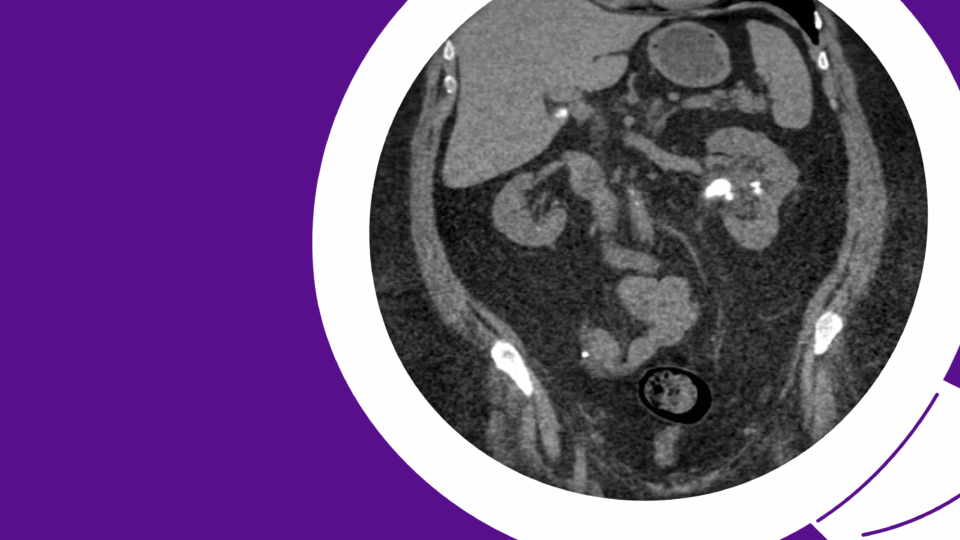Referral Notes:
- NYU Langone surgeons have developed a single-port, retroperitoneal technique for both left- and right-sided kidney extraction, with a focus on making right-sided donation safer.
- Six right-sided procedures have been completed to date, all with promising early outcomes.
- Patients can be discharged the same day.
- The technique was recently presented at the AUA 2025 Annual Meeting.
A novel, minimally invasive approach to living donor nephrectomy is set to support broader access to kidney transplantation without compromising outcomes.
Although most donor nephrectomies are performed laparoscopically via a transperitoneal route, Lee C. Zhao, MD—director of male reconstructive surgery for the NYU Langone Health system and a leader in single-port techniques—has adapted the retroperitoneal approach for robotic single-port access in select donors. Designed to make right-sided kidney extraction safer and more feasible, the technique can also be applied to left-sided procedures.
Dr. Zhao and colleagues, including Jeffrey M. Stern, MD, and Bruce E. Gelb, MD, both surgeons at the NYU Langone Transplant Institute, have performed the procedure in six right-side donors to date, all of whom achieved favorable short-term outcomes, including rapid discharge and recovery.
“The approach minimizes pain and risk of complications, while permitting kidney procurement from both sides of the body,” says Dr. Zhao.
Evolution of a Procedure
One of the primary operative hurdles with living donor nephrectomy is accessing the right kidney, as its shorter renal vein makes vascular anastomosis more challenging than in a left-sided donation. “Most kidney donation occurs on the left side because the renal vein is longer,” says Dr. Zhao.
Right-sided nephrectomy, when performed using conventional methods, is more technically demanding, potentially increasing the risk of complications like delayed graft function and thrombosis. Although the novel approach from Dr. Zhao and colleagues can be applied to both left- and right-sided kidney extraction, a specific goal of the team was to make right-sided donation safer.
“The approach minimizes pain and risk of complications, while permitting kidney procurement from both sides of the body.”
Lee C. Zhao, MD
According to Dr. Zhao, the breakthrough lies in the access to the retroperitoneum from the supine position via a single incision that is exactly the size of the kidney, with direct vision to the renal artery and vein. NYU Langone was among the first centers to acquire the single-port robotic platform, making the innovative procedure possible.
“This new technique gives us better access to the vessels on the right side, allowing for easier dissection of the kidney,” says Dr. Zhao.
With respect to complications, retroperitoneal approaches pose a lesser risk of postoperative ileus. The potential for direct intestinal injury is also minimized given that the surgical tools are not maneuvering in the vicinity of the intestines.
Expanding the Donor Pool
Dr. Zhao and colleagues expect the new robotic approach will help close the gap on the ever-growing need for living donors. “The ability to perform nephrectomy on either side of the body without compromising outcomes could greatly expand the pool of living donors,” he says.
Nicole M. Ali, MD, medical director of the Kidney Transplant Program, is excited about the potential of the technique.
“We are set to greatly expand our living donor program, performing donor nephrectomies for those who would have otherwise been deemed ineligible.”
Nicole M. Ali, MD
“Thanks to Dr. Zhao’s innovative use of robotic techniques, we are set to greatly expand our living donor program, performing donor nephrectomies for those who would have otherwise been deemed ineligible,” Dr. Ali says.
Dr. Ali also points out that patients are now being discharged significantly faster than with the laparoscopic method—even on the same day as the procedure.
“When the conventional laparoscopic method is employed, most patients are discharged within 48 hours,” she says. “Using the robotic retroperitoneal approach, some patients have been able to return home the same day.”
Supporting Broader Access
Given the early success, Dr. Zhao shared their initial experience during a presentation at the American Urological Association (AUA)’s 2025 Annual Meeting in Las Vegas this April.
“The procedure was well received at the meeting,” says Dr. Zhao. “The early results have been phenomenal. We believe it is both feasible and reproducible, maintaining favorable short-term outcomes.”
He adds, “It is a great option for patients whose preoperative workup suggests a right-sided donor nephrectomy is more suitable than a left-sided approach.”







